Research at the Chair of Paleontology
Our Science
Studying in Erlangen has profoundly changed my view of paleontology as a discipline, introducing me to an array of new ideas. The Paleontology department at Erlangen allows one to concentrate in depth in computational or lab-based research or maintains a good balance of both throughout the two years. With a broad range of exciting research topics to choose from and a positive, strong support network, the department provides a fascinating, challenging and stimulating course. Nussaibah Begum Raja Schoob
The ecology of global change in space and time
(W. Kiessling, S. Teichert, A. Kocsis, D. Dimitrijevic, E. Dunne)
- Biodiversity dynamics and global-scale changes of the Earth System
- The study of mass extinction events and climate change
- Integration of processes at multiple time scales: from deep-time to Recent
 Extinction rate of marine organisms through the Phanerozoic. (Image by W. Kiessling and A. Kocsis)
Extinction rate of marine organisms through the Phanerozoic. (Image by W. Kiessling and A. Kocsis)
Carbonate systems and sedimentology
(A. Munnecke, W. Kiessling, S. Teichert, D. Dimitrijevic)
- Carbonate rocks as archives of paleoenvironmental and paleoclimate change
- The paleoecology of reef systems
- Reconstruction of paleoenvironments
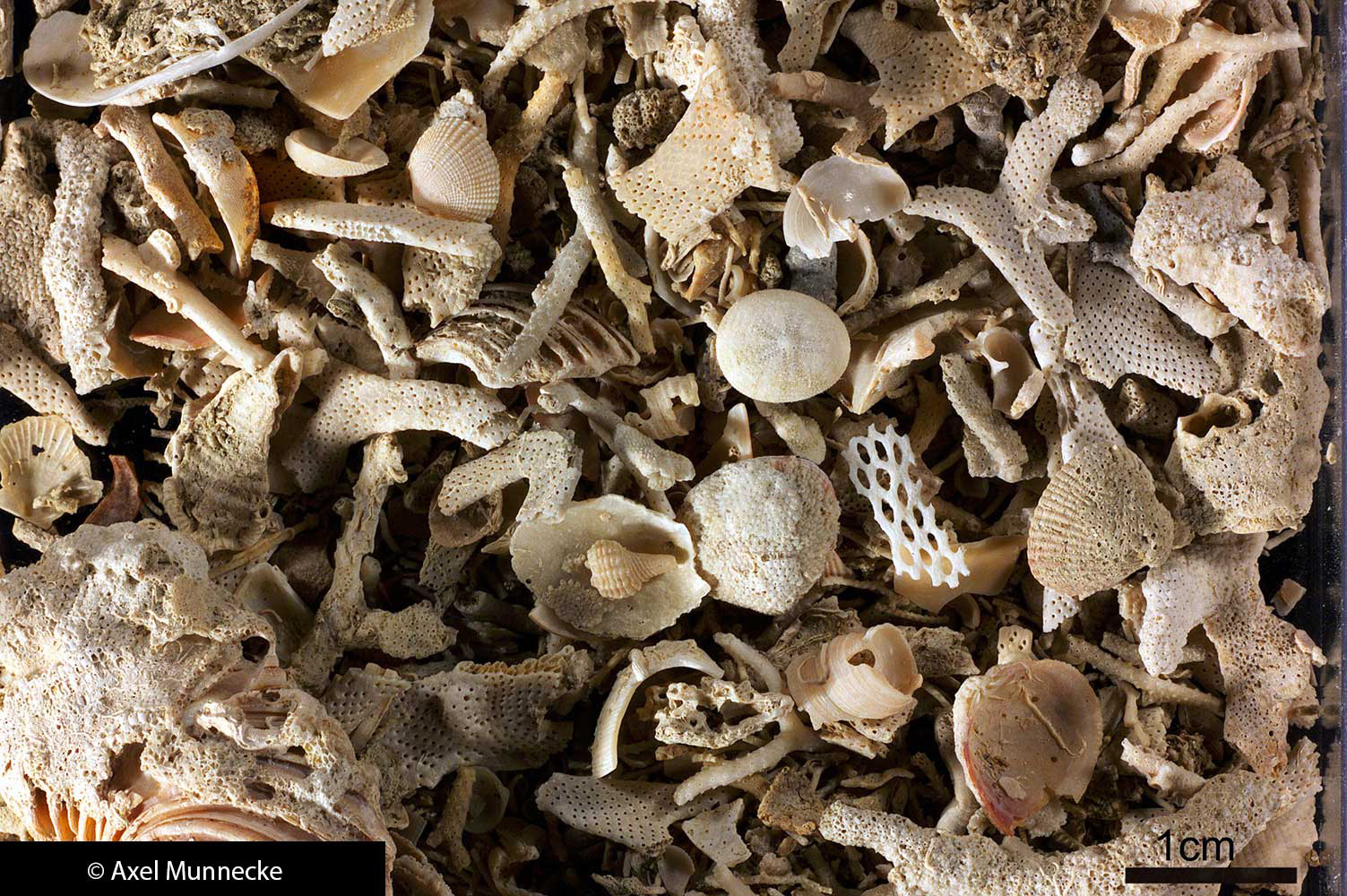 Centimeter scale fragments of various organisms. (Photo by Axel Munnecke)
Centimeter scale fragments of various organisms. (Photo by Axel Munnecke)
Phylogenetics
- Macroevolution and the relative contributions of biotic interactions (e.g., symbiosis, parasitism) and abiotic factors (e.g., climate) in driving macroevolutionary patterns
- Mechanistic models of phylogeny
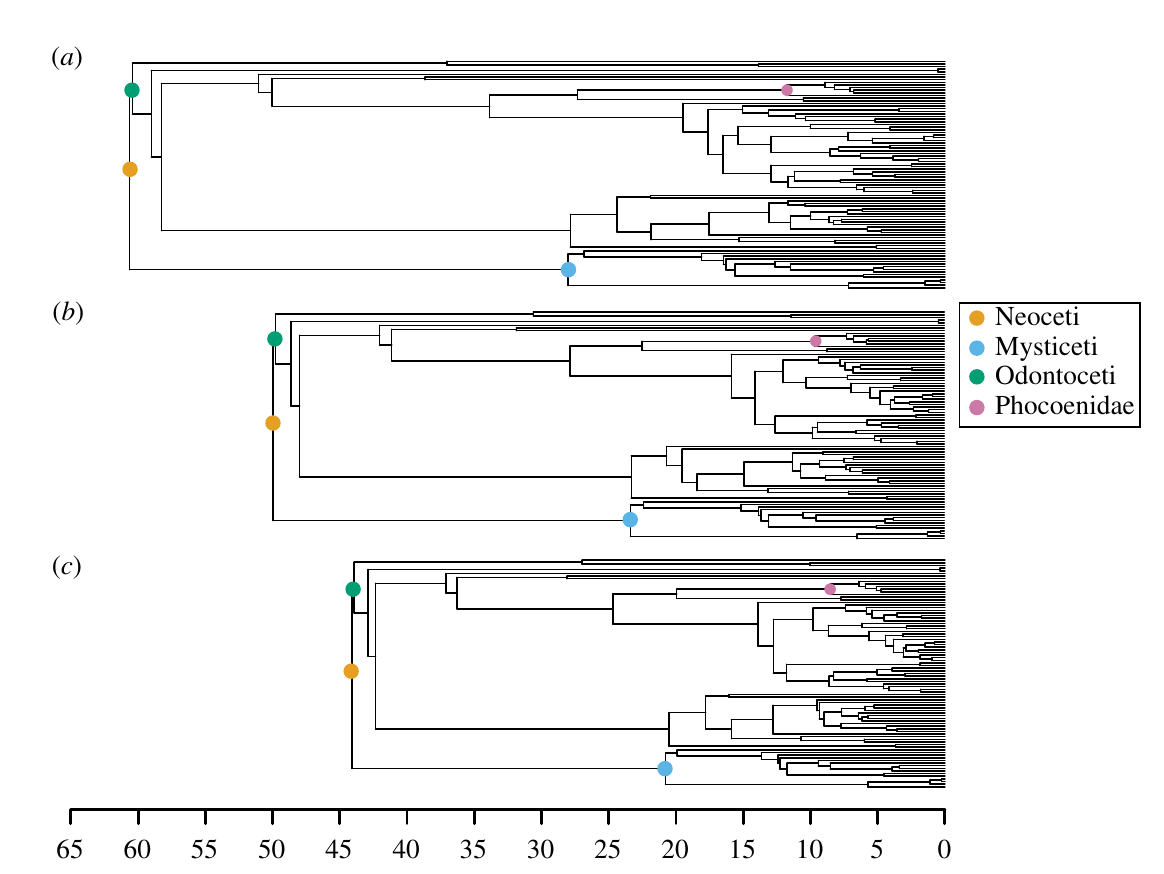 Trees inferred for a dataset of ceteacen fossil occurrences (Figure 4. from Barido-Sottani et al. 2019)
Trees inferred for a dataset of ceteacen fossil occurrences (Figure 4. from Barido-Sottani et al. 2019)
Vertebrate paleobiology
(E. Dunne)
- Paleoecology and paleobiogeography of Mesozoic vertebrates (e.g. dinosaurs)
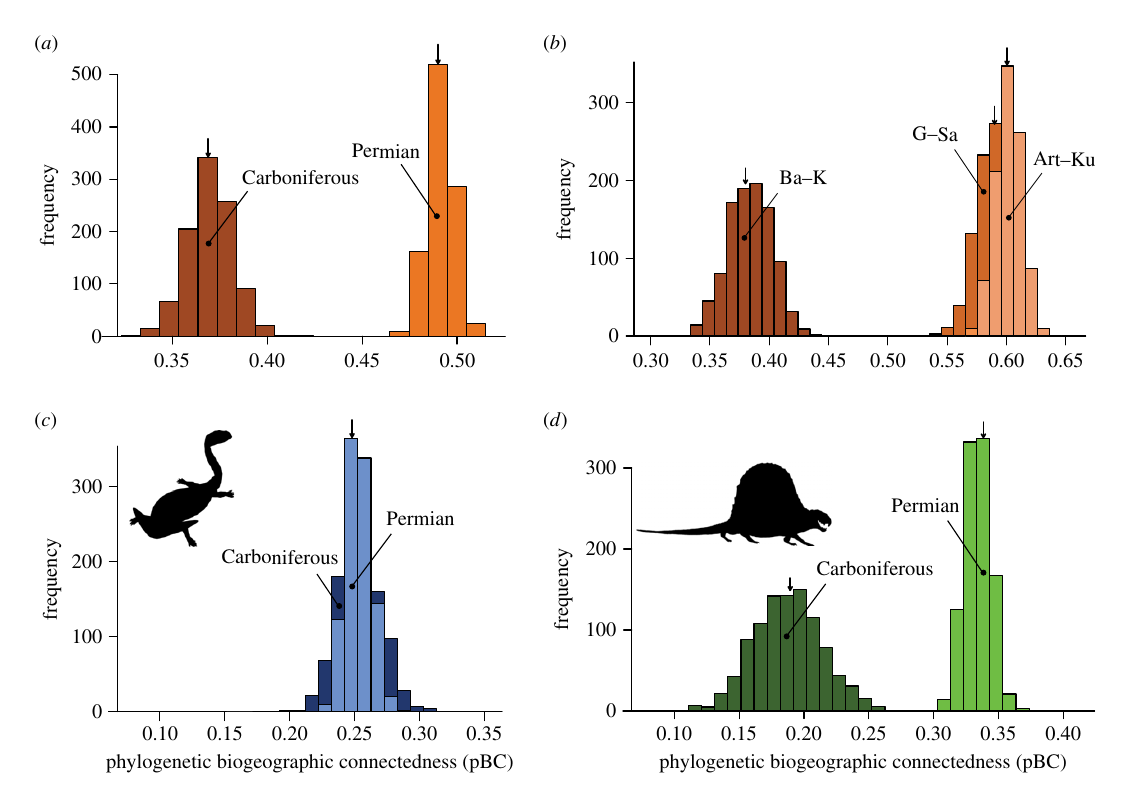 Bootstrap analyses of phylogenetic biogeographic connectednes (Figure 4. from Dunne et al. 2018)
Bootstrap analyses of phylogenetic biogeographic connectednes (Figure 4. from Dunne et al. 2018)
Sustainable and equitable scientific practice
(A. Kocsis, E. Dunne, W. Kiessling, R. Warnock)
- Development and contribution to scientific software, such R packages
- Contributing to global-scale datasets, some which are maintained by us
- Ethics and economy of fossil sampling and collection
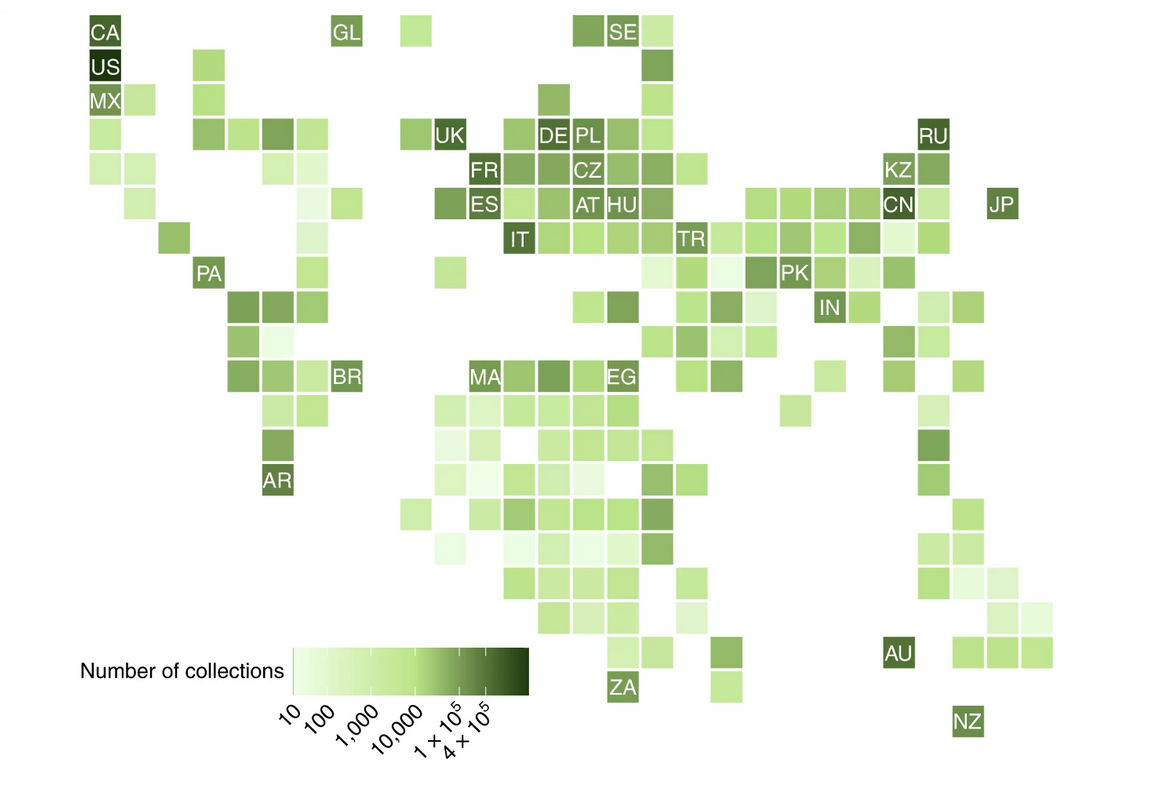 Fossil localities sampled in each country (Figure 1. from Raja et al. 2021)
Fossil localities sampled in each country (Figure 1. from Raja et al. 2021)
Sedimentary Geochemistry in Earth System Research
- Oxygen isotope geochemistry for paleotemperature estimates
- Geochemical changes during biotic crises
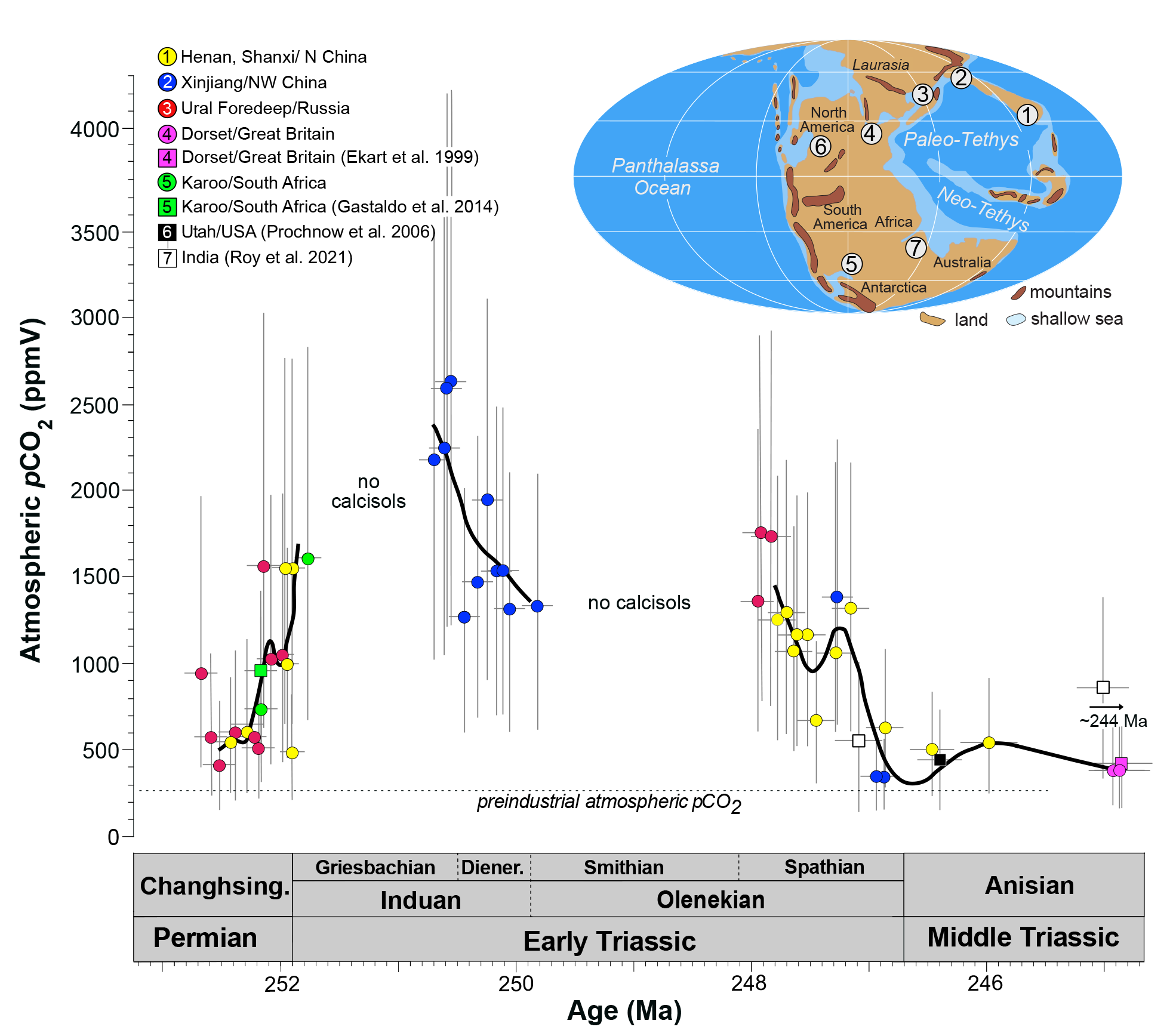 The Permian-Triassic atmospheric CO2 record (Figure 1. from Joachimski et al. 2022)
The Permian-Triassic atmospheric CO2 record (Figure 1. from Joachimski et al. 2022)
Naturally, our output is much more diverse and these are just the main themes that we follow in our research. You can find out more about research at the Paleontology here.
